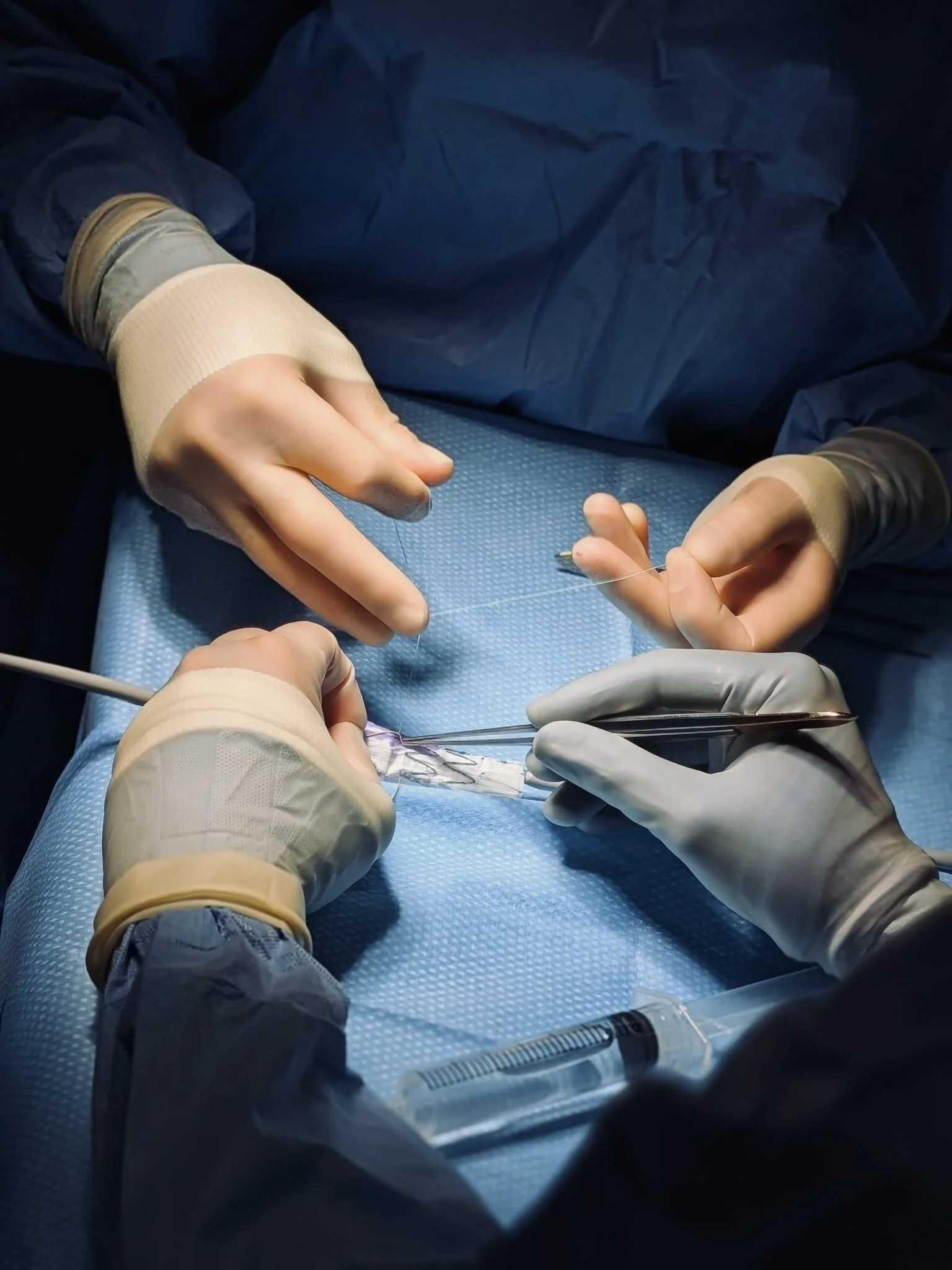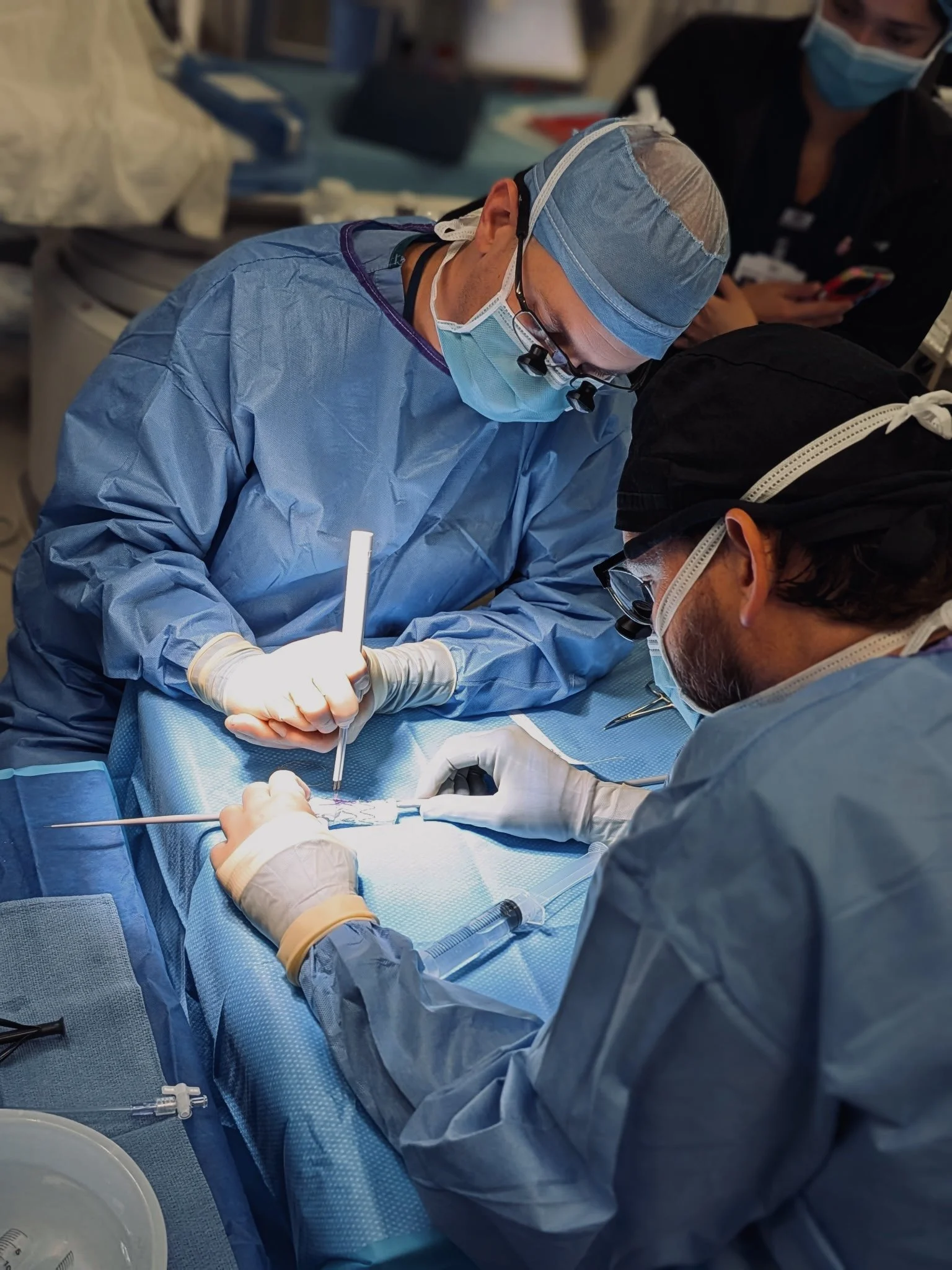Aortic Reconstruction for Aneurysm and Occlusive Disease
Overview
Aortic reconstruction is a major vascular surgery used to repair the aorta—the body’s largest artery—when it becomes damaged by an aneurysm (bulging) or occlusive disease (blockage). Unlike endovascular repair, this procedure is performed through an open surgical approach, allowing for direct reconstruction of the affected aortic segment.
Depending on the location and extent of disease, this surgery may involve the abdominal aorta (abdominal aortic reconstruction) or extend into the iliac or femoral arteries.
Symptoms
Aortic Aneurysm Symptoms
Often no symptoms until large or ruptured
Pulsating feeling in abdomen
Back or abdominal pain
Sudden, severe pain and collapse (rupture = emergency)
Occlusive Disease Symptoms
Leg pain when walking (claudication), relieved by rest
Coldness, numbness, or weakness in the legs
Non-healing wounds or ulcers on the feet
Erectile dysfunction in men (Leriche syndrome)
Causes and Risks
Aneurysms
Atherosclerosis (plaque buildup weakens the arterial wall)
Genetic connective tissue disorders (Marfan, Ehlers-Danlos)
Chronic smoking
High blood pressure
Family history
Occlusive Disease
Atherosclerosis (most common cause)
Smoking
Diabetes
High cholesterol
Sedentary lifestyle
Advanced age
Diagnosis
To diagnose aneurysm and occlusive disease accurately and determine how severe the diagnosis is, your doctor may recommend:
Physical examination (palpation of pulses, bruit sounds)
Ankle-Brachial Index (ABI) for occlusive disease
Ultrasound (especially for aneurysms)
CT Angiography (CTA) or MR Angiography (MRA)
Conventional angiogram (occasionally used for detailed vessel mapping
Imaging helps determine:
Size and location of aneurysm
Severity and extent of occlusive blockage
Suitability for open vs. endovascular repair
Role of a Vascular Surgeon
If you experience symptoms or have been diagnosed with either disease, ask your primary care provider to refer you to a vascular surgeon. Vascular surgeons can confirm your diagnosis and perform necessary treatments, they specialize in diagnosing and treating diseases of the arteries and veins.
Their roles may include:
Evaluating your vascular condition
Discussing all treatment options
Performing surgery and ensuring recovery
Long-term follow-up care
Treatments
The type of reconstruction depends on the condition.
Aneurysm Repair
Involves clamping the aorta above and below the aneurysm
Removing the weakened section
Sewing in a tube or bifurcated graft to restore blood flow
Occlusive Disease Repair
Blocked arteries are bypassed with a Y-shaped graft sewn from the aorta to the femoral arteries in the groin
Blood flow is restored to the lower limbs
Procedure Details
General anesthesia
Large abdominal incision
Hospital stay of 5–10 days
Total recovery time: 6–12 weeks
What can I expect after treatment?
In the Hospital
Monitored in ICU for 1–2 days
Pain management, blood pressure control
Gradual reintroduction of diet and movement
At Home
Gradual increase in activity over 6–8 weeks
Avoid heavy lifting
Wound care and infection prevention
Regular follow-up for graft surveillance
What you learned


